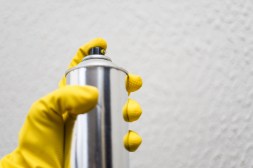Understanding the Difference: Evaporative Coolers vs Swamp Coolers
When it comes to cooling your home or office during hot summer months, evaporative coolers and swamp coolers are two popular options. While these terms are often used interchangeably, there are subtle differences between the two. In this article, we will explore the distinctions between evaporative coolers and swamp coolers, helping you make an informed decision for your cooling needs.
How Evaporative Coolers Work
Evaporative coolers, also known as desert or air coolers, work by using the natural process of evaporation to provide a cooling effect. These units utilize a fan to draw in warm air from outside and pass it through moistened pads. As the warm air passes over these pads, the moisture evaporates, lowering the temperature of the air. The cooled air is then circulated back into the room, providing a refreshing breeze.

One key feature of evaporative coolers is that they require a constant supply of fresh outdoor air to work effectively. This means that windows or doors need to be partially open for proper ventilation. Evaporative coolers work best in dry climates where humidity levels are low.
Understanding Swamp Coolers
Swamp coolers are essentially a type of evaporative cooler but with some distinct differences. Unlike evaporative coolers that use water-soaked pads for cooling, swamp coolers operate by saturating large cellulose pads with water. The saturated pads act as filters through which warm air is drawn in by a fan and cooled through evaporation.
One important aspect of swamp coolers is their ability to add moisture to the air during operation. This can be beneficial in arid regions where humidity levels tend to be extremely low. However, in areas with high humidity levels already present, swamp coolers may not be as effective at lowering temperatures.
Pros and Cons of Evaporative Coolers
Evaporative coolers offer several advantages. Firstly, they are energy-efficient, consuming significantly less electricity compared to traditional air conditioning systems. Additionally, they provide fresh, filtered air by constantly bringing in outdoor air. This can be beneficial for individuals with respiratory issues or allergies.
However, evaporative coolers have limitations. They are most effective in dry climates and may struggle to cool adequately in high humidity areas. Furthermore, they require regular maintenance to prevent the growth of mold or bacteria within the moistened pads.
Pros and Cons of Swamp Coolers
Swamp coolers have their own set of advantages. They are highly effective in dry climates and can add much-needed moisture to the air. This can be particularly beneficial for individuals suffering from dry skin or respiratory problems caused by excessively dry environments.
On the downside, swamp coolers may not be suitable for regions with high humidity levels as they can increase indoor moisture levels even further. Additionally, these units require regular maintenance to prevent mineral buildup and ensure optimal performance.
In conclusion, while evaporative coolers and swamp coolers are related concepts that use evaporation for cooling purposes, there are subtle differences between the two. Evaporative coolers utilize water-soaked pads whereas swamp coolers use cellulose pads saturated with water. Understanding these differences will help you make an informed decision when choosing a cooling solution that best suits your specific needs and environmental conditions.
This text was generated using a large language model, and select text has been reviewed and moderated for purposes such as readability.


